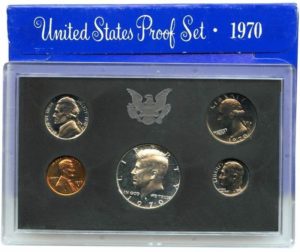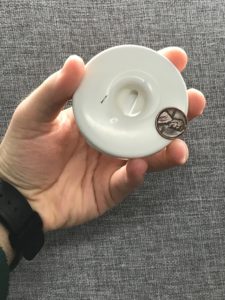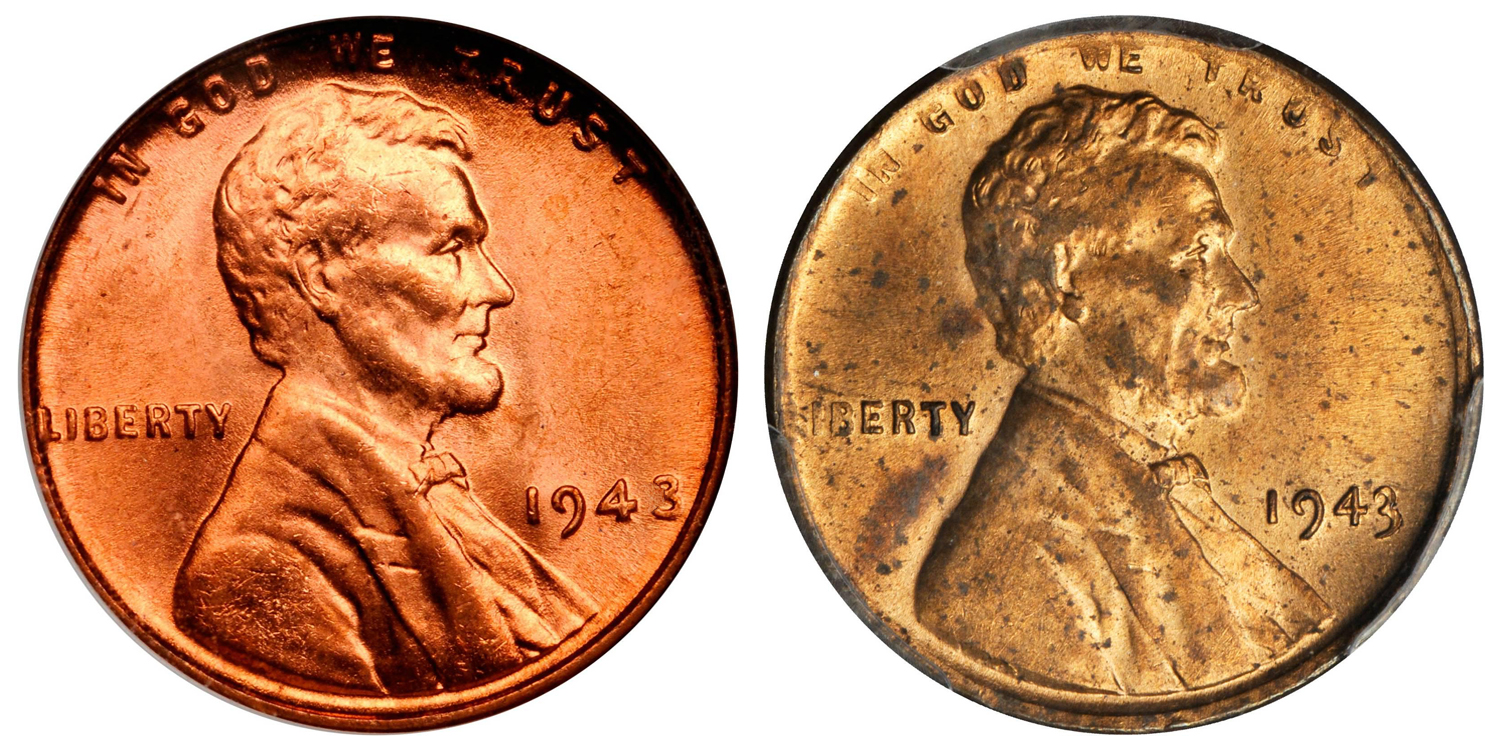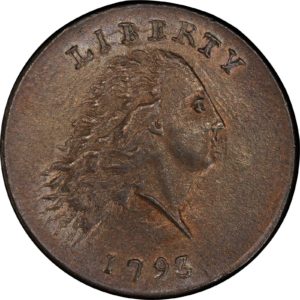1970-S Proof Quarter Mint Error Value
So if you want the quick answer, there is a 99.9999999% chance that you have a regular strike non-error circulation 1970 or 1970-D quarter. There were approximately 136 million 1970 quarters struck and another 417 million 1970-D United States quarters released for circulation by The United States Mint. We are going to tell you how to tell if you have the mint error (mistrike, mistake, misprint, etc).
 This is what a 1970-S Proof set looks like. The majority of proof coins are still in these original black cases. Yes, it is possible that someone broke the coins out of cases and spent them. But most loose quarters dated as 1970 will be circulation coins with no mintmark or the D mint mark.
This is what a 1970-S Proof set looks like. The majority of proof coins are still in these original black cases. Yes, it is possible that someone broke the coins out of cases and spent them. But most loose quarters dated as 1970 will be circulation coins with no mintmark or the D mint mark.
Step1: Do You Have A Proof 1970-S Quarter?
As a very basic first step you need to figure out if you at least have a proof quarter. You can read at length about what a proof coin is. But to summarize, a proof coin is minted differently and more carefully than a regular circulation strike. They appear to have more round surfaces and the coin is “shinier” aka prooflike. That just means that the surfaces are more like a mirror. All of that aside, all 1970 proof quarters will have an S mintmark to indicate that they are from the San Francisco mint. So, if your 1970 quarter does not have an S mint mark (meaning it has no mint mark or it has a D mintmark) then you can stop reading. You do not have the 1970-S mistrike error.
The quarter on the right is a 1970-S proof with the S mint mark (the quarter we are showing in this image does not have the valuable mistake to it).
Step2: You Confirmed You Do Have A Proof 1970-S Quarter, Now What?
For the record, official mint documents state that 2,632.810 proof quarters were struck for the 1970-S year. Keep in mind that these proof coins were all marketed directly to collectors. They were not meant for circulation. It is very likely that the original production is still in existence in collections today. Yet of that 2.6 million, only one Canadian error has been found. Step two is essentially to just look at your proof coin and see if there are any ghosting qualities behind the traditional design. Of course realistically you aren’t going to see anything. If you think you see something, then move onto Step3.

Hopefully these pictures from the coin’s owner show the error clearly, even though it is very slight.
Step3: Compare Your 1970-S Proof 25 Cent Quarter To The Known Error.
The current hysteria around the 1970-S quarter relates to one that was discovered by and is currently be marketed by a well known coin dealer who specializes in mint errors. The proof 1970-S quarter is struck over a 1941 Canadian quarter. So it isn’t so much a process error in the production as much as it is a one of kind manmade error. And by that we mean that it is very likely that someone intentionally put this 1941 Canadian quarter into the machine knowing that it would create an error. I think the exciting idea is that this same person could have put a number of other coins through the same process and that other similar type errors could still be out there. However, finding the exact same 1970S over 1941 Canadian quarter almost surely isn’t going to happen. Furthermore, this unprecedented attention will surely create some copycat coins. The significant value of the mint error is going to be great incentive for people to buy regular proof 1970-S quarters for $1 and try to alter the coins to give them the look of a true mint error.

The coin on the left is a standard 1970-S quarter that has a value of about $1. The coin on the right is the heralded misprint quarter that the owner is trying to sell for $35,000.
To Summarize:
Of the 460,000,000 total quarters dated as 1970, only about 2.6 million are proofs. Of the 2.6 million proofs, only 1 has been found with the 1941 error. You could very well have a mint error, but it would be virtually impossible for you to have the exact same 1970-S proof quarter over 1941 Canadian quarter. We hope this article has been helpful and not too much of a downer.
 This is what a 1970-S Proof set looks like. The majority of proof coins are still in these original black cases. Yes, it is possible that someone broke the coins out of cases and spent them. But most loose quarters dated as 1970 will be circulation coins with no mintmark or the D mint mark.
This is what a 1970-S Proof set looks like. The majority of proof coins are still in these original black cases. Yes, it is possible that someone broke the coins out of cases and spent them. But most loose quarters dated as 1970 will be circulation coins with no mintmark or the D mint mark. Hopefully these pictures from the coin’s owner show the error clearly, even though it is very slight.
Hopefully these pictures from the coin’s owner show the error clearly, even though it is very slight.









 One of our favorite coins in this impressive collection was the 1796 Draped Bust Quarter (Image B). The quarter had nice orange and yellow toning around the rim of the coin, and featured well defined lines. This coin realized $1.527 Million.
One of our favorite coins in this impressive collection was the 1796 Draped Bust Quarter (Image B). The quarter had nice orange and yellow toning around the rim of the coin, and featured well defined lines. This coin realized $1.527 Million.
